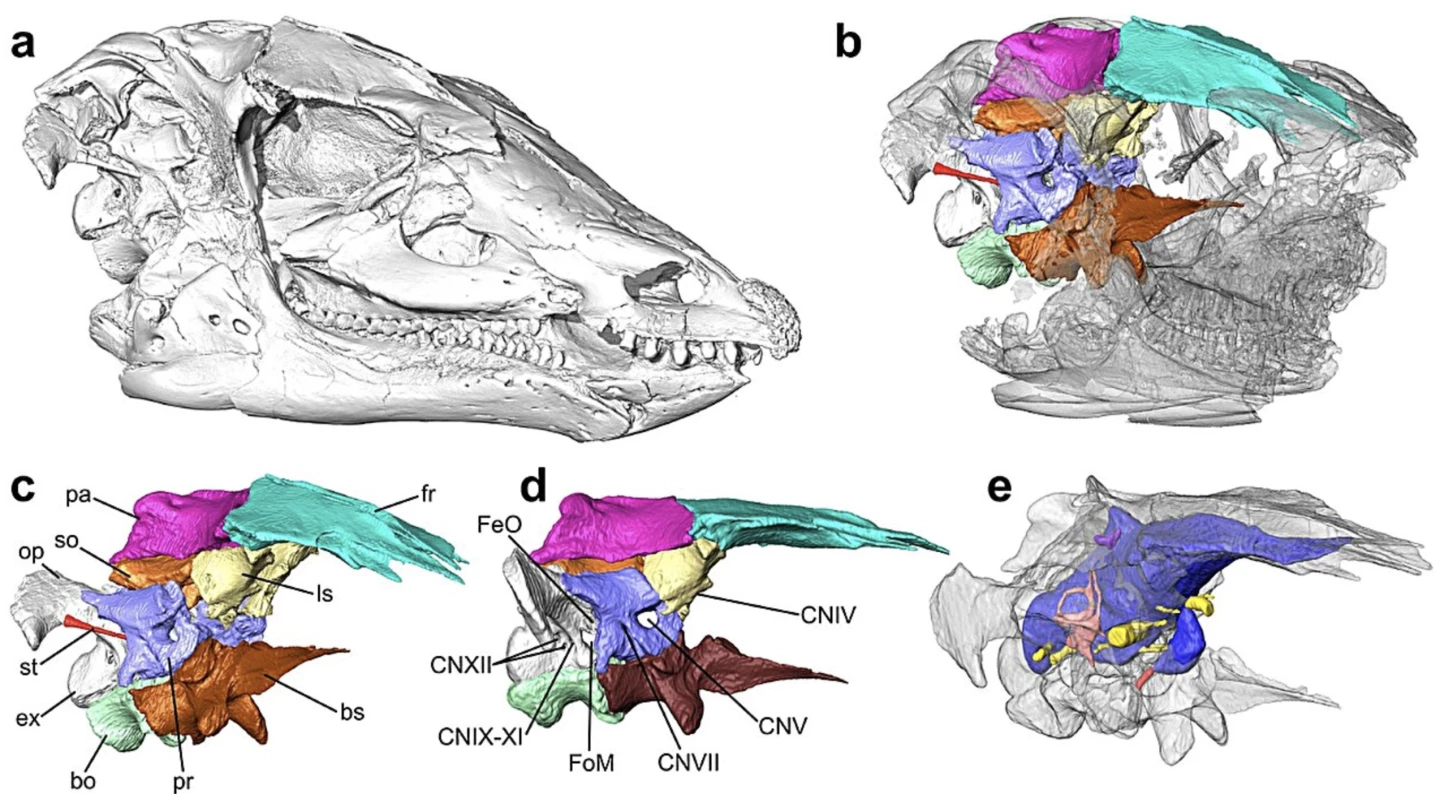A dinosaur that has been derided as plain and boring has had its reputation upended, with new technology revealing that it was in possession of some serious Late Cretaceous-era sensory superpowers that suggest it could have been thriving below the ground and "living under the feet of T. rex and Triceratops ."
It’s the first time that research has linked specific sensory development to a set of subterranean behaviors in any dinosaur.
“The irony is that paleontologists generally think of these animals as pretty boring,” says study co-author Lindsay Zanno, associate research professor at North Carolina State University (NC State) and head of paleontology at the North Carolina Museum of Natural Sciences. “When we first looked at our results we thought, yeah, this animal is plain as toast. But then we took a big step back and realized there was something unique about the combination of Willo’s sensory strengths and weaknesses.”
Zanno and University of Bristol research associate David Button, formerly of NC State, have used CT scanning to reconstruct soft tissue of a particularly well-preserved Thescelosaurus neglectus skull from a specimen known as Willo.
While the soft-tissue makeup of Willo, who was discovered in 1993 and now calls the North Carolina Museum of Natural Sciences home, revealed that the species did not have a brain size worth writing home about, it did reveal fascinating aspects regarding an extraordinary sense of both smell and balance.
“We found that the olfactory bulbs – the regions of the brain that process smell – were very well developed in Thescelosaurus,” Button said. “They were relatively larger than those of any other dinosaur we know of so far, and similar to those of living alligators, which can smell a drop of blood from miles away. Thescelosaurus may have used its similarly powerful sense of smell to instead find buried plant foods like roots and tubers. It also had an unusually well-developed sense of balance, helping it to pinpoint its body position in 3D space, another trait often found in burrowing animals.”

Building on this sensory ‘fingerprint’, the researchers could also determine that T. neglectus’ hearing was as subpar as its cognition, likely able to pick up just 15% of the frequencies that humans can detect. The dinosaur was particularly ‘deaf’ to high-pitched sounds.
“We found that Thescelosaurus heard low frequency sounds best, and that the range of frequencies it could hear overlaps with T. rex,” Zanno said. “This doesn’t tell us they were adapted to hearing T. rex vocalize, but it certainly didn’t hurt them to know when a major predator was tooling about in the area. More interesting to us was the fact that these particular deficiencies are often associated with animals that spend time underground.”
Adding to the evidence that suggests a rare subterranean dinosaur, which lived some 66 million years ago, shortly before the Earth received an infamous asteroid visit, are T. neglectus' powerful arms and legs. With its pros of hearing and limb strength, and cons of brain size and poor hearing, the dinosaur is uniquely in possession of the characteristics of many animals that spend time, or live, underground.

“While we can’t say definitively that these animals lived part of their lives underground, we know that their ancestors did,” Button said. “This fact, together with their unique combination of sensory abilities, strongly suggests T. neglectus engaged in similar behaviors.”
Willo, meanwhile, has been the subject of much scientific debate over the years. Belonging to a small but heavy species, at 12 ft (3.6 m) long and 750 lb (340 kg), Willo was thought to have been dug up with evidence of heart tissue contained within the ribcage.
This excited scientists, who penned a paper in 2000 on it, believing that if it did possess a four-chambered heart that iron concentrations hinted at, T. neglectus could hold the key to important new discoveries regarding the extent of bird-like dinosaur physiology. However, a subsequent 2011 study found that the preserved tissue could have come from many sources, including plant matter that washed into the decaying skeletal spaces of Willo and was therefore fossilized with the native remnants of the dinosaur.
Button and Zanno remain hopeful that their fascinating findings provide the start of a new avenue of exploration into a great unknown of dinosaur life underground – not bad, for a species whose scientific name roughly translates to "wonderful, overlooked lizard."
“We still don’t know the sensory abilities of most dinosaurs,” Zanno says. “That makes it difficult to link these traits to specific lifestyles with confidence, but it also means there are plenty of cool discoveries to come.
“The idea that there might have been dinosaurs living under the feet of T. rex and Triceratops is fascinating,” he added. “No matter what, we now know for certain that T. neglectus isn’t boring.”
The researched was published in the journal Scientific Reports.
Source: North Carolina State University






